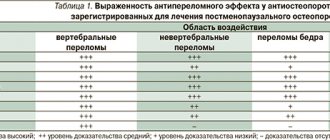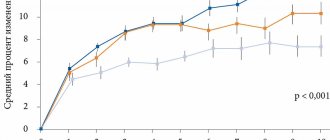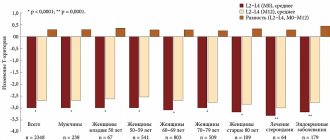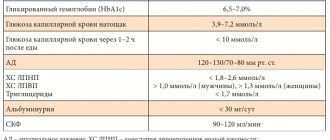Veroclast
Before infusion, ensure that the patient is adequately hydrated. If necessary, it is recommended to administer a 0.9% sodium chloride solution before, during or after infusions of the drug. Overhydration of the patient should be avoided due to the risk of cardiovascular complications.
After administration, constant monitoring of the concentrations of calcium, phosphorus, magnesium and creatinine in the blood serum is necessary. If hypocalcemia, hypophosphatemia or hypomagnesemia develops, short-term additional administration of the corresponding substances may be necessary. Patients with untreated hypercalcemia usually have impaired renal function, so careful monitoring of renal function in this category of patients is necessary. When deciding whether to treat patients with bone metastases with zoledronic acid, it should be taken into account that the therapeutic effect occurs 2-3 months after the start of treatment with zoledronic acid.
There are isolated reports of renal dysfunction associated with the use of bisphosphonates. Risk factors for such complications include dehydration, previous renal failure, repeated administration of zoledronic acid or other bisphosphonates, as well as the use of nephrotoxic drugs, and too rapid administration of the drug. Although the risk of the above complications is reduced when zoledronic acid is administered at a dose of 4 mg over at least 15 minutes, the possibility of renal dysfunction remains. There have been cases of deterioration in renal function, progression of renal failure and the need for hemodialysis with the first or single use of zoledronic acid.
Increases in serum creatinine concentrations have also been observed in some patients with long-term use of zoledronic acid at recommended doses, although less frequently.
Since there are limited clinical data on the use of the drug in patients with severe liver failure, it is not possible to make specific recommendations for this category of patients.
When deciding on the use of the drug Veroclast in patients with hypercalcemia caused by a malignant tumor, against the background of impaired renal function, it is necessary to assess the patient’s condition and conclude whether the potential benefit of administering the drug outweighs the possible risk. Serum creatinine concentrations should be determined before each administration of zoledronic acid. At the beginning of treatment with the drug in patients with bone metastases and with mild to moderate renal dysfunction, it is recommended to use zoledronic acid in reduced doses. In patients who develop renal impairment during therapy with Veroclast, therapy with the drug can be continued only after the serum creatinine concentration returns to values that are within 10% of the initial value.
Cases of osteonecrosis of the jaw in cancer patients during treatment with bisphosphonates, including zoledronic acid, have been described. Many patients had signs of a local infectious and inflammatory process, including osteomyelitis. In clinical practice, the development of osteonecrosis of the jaw was most often observed in patients with advanced breast cancer and multiple myeloma, as well as in the presence of dental diseases (after tooth extraction, periodontal diseases, unsatisfactory fixation of dentures). Known risk factors for the development of osteonecrosis of the jaw are cancer, concomitant treatment (chemotherapy, radiation therapy, treatment with glucocorticosteroids), concomitant diseases (anemia, coagulopathy, infection, previous oral disease).
Before prescribing bisphosphonates, patients should undergo a dental examination and necessary preventive procedures, and should be advised to maintain strict oral hygiene. Dental surgery should be avoided if possible during treatment of these patients. There is no evidence that interrupting bisphosphonate treatment before dental procedures reduces the risk of developing osteonecrosis of the jaw. The treatment plan for a particular patient should be based on an individual assessment of the risk/benefit ratio.
In clinical practice, rare cases of severe and in some cases disabling pain in bones, joints and muscles have been reported with the use of bisphosphonates, which include zoledronic acid. These symptoms developed over a period of one day to several months after the start of treatment. Symptoms resolved in most patients after treatment was stopped. In several patients, symptoms recurred when therapy was restarted or another bisphosphonate was prescribed.
The effectiveness and safety of zoledronic acid in pediatric practice have not yet been established.
Impact on the ability to drive vehicles and operate machinery
There is no information on the effect of the drug Veroclast on the ability to drive vehicles and other mechanisms.
Veroclast instructions for use of the drug
Bone resorption inhibitor, nitrogen-containing bisphosphonate. Acts primarily on bone, inhibits osteoclast activity and bone resorption.
The selective effect of bisphosphonates on bone tissue is based on their high affinity for mineralized bone tissue. After IV administration, zoledronic acid is rapidly redistributed into the bones and, like other bisphosphonates, is localized primarily in areas of bone tissue remodeling.
The main molecular target of zoledronic acid in the osteoclast is the enzyme farnesyl pyrophosphate synthetase (FPS), although the possibility of other mechanisms of action cannot be excluded. The long period of action is determined by the high affinity for the active center of the FPS and pronounced affinity for mineralized bone tissue.
With the exception of its high antiresorptive effect, the effects of zoledronic acid on bone tissue are similar to those of other bisphosphonates.
In addition to its inhibitory effect on bone resorption, zoledronic acid has antitumor properties that provide therapeutic efficacy in bone metastases.
In vivo: inhibition of osteoclastic bone resorption, changing the microenvironment of the bone marrow, leading to a decrease in the growth of tumor cells; antiangiogenic activity. Suppression of bone resorption is clinically accompanied by a pronounced decrease in pain.
In vitro: inhibition of osteoblast proliferation, direct cytotoxic and proapoptotic activity, synergistic cytostatic effect with antitumor drugs; anti-adhesive/invasive activity.
Zoledronic acid, by inhibiting proliferation and inducing apoptosis, has a direct antitumor effect against human myeloma cells and breast cancer, and also reduces the penetration of breast cancer cells through the extracellular matrix, which indicates the presence of antimetastatic properties. In addition, zoledronic acid inhibits the proliferation of human endothelial cells and causes an antiangiogenic effect in animals.
In patients with tumor-induced hypercalcemia, zoledronic acid has been shown to act by decreasing serum calcium concentrations and decreasing urinary calcium excretion.






